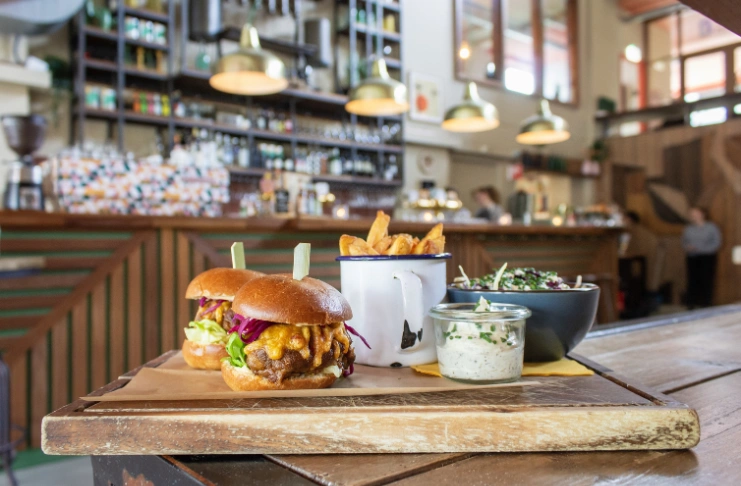Running a commercial kitchen for a fast food restaurant isn’t just about irresistible flavors and lightning-fast service—real success starts behind the scenes, where the sizzle meets the strategy. The right cooking equipment and a smart kitchen setup can make or break your efficiency, safety, and service quality.
In this guide, we’ll walk you through everything you need to know about essential cooking equipment, how to set up your kitchen, and tips to optimize your layout for peak performance.
Why Fast Food Cooking Equipment Matters
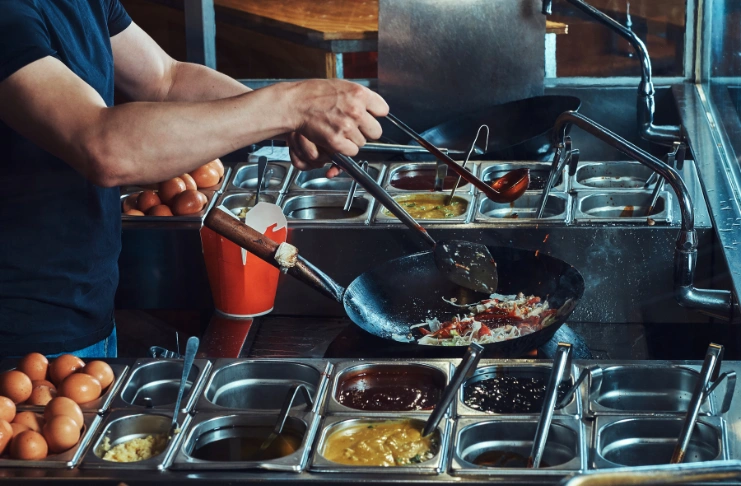
Your equipment is the heartbeat of your kitchen, enabling your staff members to work quickly and consistently. Every tool and appliance you invest in directly affects your team’s ability to work quickly and consistently. Customers expect fast, fresh, and accurate orders—and the best way to meet that demand is by ensuring your kitchen is well-equipped and efficiently designed.
INDUSTRY INSIGHT
| Recent industry research underscores that speed of service remains a top priority for fast-food customers. A 2024 report by the National Restaurant Association highlights that 75% of consumers consider speed critical when choosing takeout or drive-thru options. |
That means the tools you choose—from fryers to prep tables—have a direct impact on your customer satisfaction and profitability.
How to Set Up a Fast Food Kitchen for Maximum Efficiency

Launching a fast-food restaurant involves more than just hiring a crew and picking a location; effective kitchen design is also crucial.
Let’s explore how to build a setup that keeps your service fast and consistent, even during peak hours.
1. Understand Your Menu First
The types of food you serve will determine your core equipment needs. For instance, a burger-focused menu will require griddles, fryers, and holding cabinets. If your offerings include sandwiches, salads, or wraps, you’ll need refrigerated prep tables and slicers. For coffee or dessert-driven outlets, blenders, espresso machines, and soft-serve machines become essential.
2. Divide the Kitchen into Stations
Creating an assembly line kitchen layout allows your staff to specialize in specific tasks and reduces unnecessary movement. A basic fast food kitchen setup might include a prep station for chopping and marinating, a cooking station equipped with fryers and grills, an assembly station to put together orders, and a packaging and service station for bagging and final checks of delivery orders.
3. Follow the Flow of Movement
Ensure that tools and ingredients are placed exactly where they’re needed. Position fryers close to prep areas, keep buns near grills, and locate your POS near the hand-off counter.
When you understand your menu and design your kitchen with purpose, you’ll minimize errors, improve speed, and set your staff up for success.
Must-Have Restaurant Equipment List
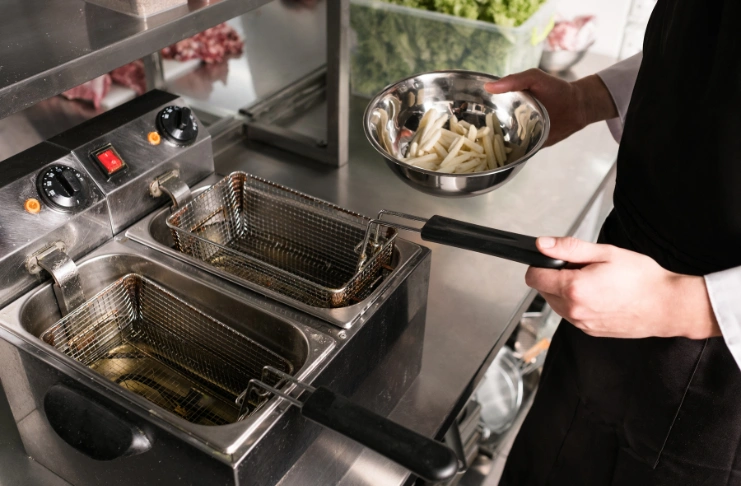
Choosing the right equipment is the foundation of an efficient kitchen. 12% of Americans rate their number one service frustration as “lack of speed.”
Here’s a breakdown of the best equipment for fast-food restaurants, with a focus on performance, reliability, speed, space efficiency, all needed during high order volume hours.
1. Commercial Deep Fryers
These dishes are essential for fries, nuggets, onion rings, and other fried favorites. Look for models with fast heat recovery, built-in oil filtration, and high output to handle volume during peak hours. Dual-basket fryers offer even more flexibility for cooking different items simultaneously.
2. Flat-top Grills and Griddles
These cook surfaces are versatile for burgers, eggs, bacon, and sandwiches. The best models offer precise temperature control, even heat distribution, and easy-to-clean surfaces. Choose a size based on your menu volume.
3. Conveyor Toasters
Toasting buns and bread efficiently is a game-changer during high-volume service. Conveyor toasters allow for consistent browning and higher throughput than pop-up alternatives. Adjustable speed and heat settings let you customize output for different products.
4. Refrigerated Prep Tables
These tables keep prepped ingredients fresh and accessible for food prep. Built-in cold pans and worktops help maintain food safety while allowing for faster prep. Use them for sandwiches, salads, or burger toppings.
5. Holding Cabinets & Heat Lamps
Holding equipment helps maintain food temperature between cooking and serving. Heat lamps and warming cabinets reduce waste and keep your food hot without drying it out, ensuring quality across busy shifts.
6. Commercial Microwaves
Ideal for quickly reheating items or melting cheese, commercial-grade microwaves offer higher wattage and programmable settings. Unlike residential models, these are built for speed, durability, and repeat use.
7. Beverage Dispensers
Fast service includes cold drinks. Soda fountains, iced tea dispensers, or smoothie machines improve consistency and speed at the beverage station. Many modern dispensers offer portion control to minimize waste.
8. POS and Kitchen Display Systems (KDS)
Digital order systems help eliminate communication errors between front-of-house and kitchen staff. A good POS integrates with a KDS for real-time order tracking, boosting kitchen coordination and customer satisfaction.
9. Freezers & Coolers
Your inventory is only as good as your cold storage. Choose energy-efficient freezers and coolers with quick temperature recovery and smart shelving to accommodate both bulk and ready-to-use stock.
Investing in high-quality, purpose-driven equipment not only streamlines your operations for increased order volume but also adheres to safety regulations, reduces maintenance costs, and helps scale your business effectively.
Restaurant Kitchen Layout Optimization Tips
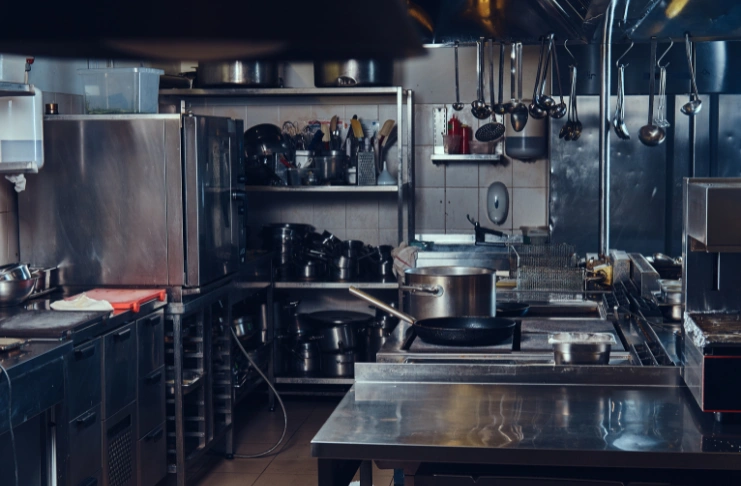
The way your restaurant kitchen layout is arranged has a direct impact on how quickly and efficiently your staff can prepare orders. An efficient layout helps your team move seamlessly from one task to another, improving both speed and safety. Here are expert-backed strategies in commercial kitchen design to design a space that works as hard as you do.
1. Use the “Kitchen Triangle” Concept
This commercial kitchen floor plan layout principle connects three core zones—cold storage, cooking, and prep/assembly. By reducing the distance between these points, you cut down on wasted movement. The kitchen triangle works well in fast-casual restaurants and helps improve flow even during peak times.
2. Optimize Vertical Space
Storage areas aren’t just about floor space. Install shelves, racks, and wall-mounted hooks to store equipment, utensils, and dry goods. This not only frees up valuable counter space but also improves accessibility for your staff.
3. Avoid Cross-Contamination Zones
Food safety should be baked into your layout. Designate separate prep zones for raw and cooked items, use color-coded cutting boards, and consider dual-compartment sinks. This approach keeps food safe and reduces the risk of costly health code violations.
4. Add Mobile Equipment
Wheeled prep tables, carts, and bins add flexibility and ease of cleaning. During deep cleaning or layout adjustments, mobile units allow you to reconfigure the space quickly without major downtime.
5. Integrate Ventilation and Safety Systems
Proper air flow, fire suppression systems, and hood installations are not only required by health codes but are essential for a safe working environment. A well-ventilated kitchen keeps equipment running efficiently and ensures staff comfort.
A thoughtfully optimized commercial kitchen layout in fast casual restaurants leads to smoother workflows, fewer errors, and a safer work environment—all of which contribute to faster service and better customer experiences.
Emerging Trends in Fast Food Equipment
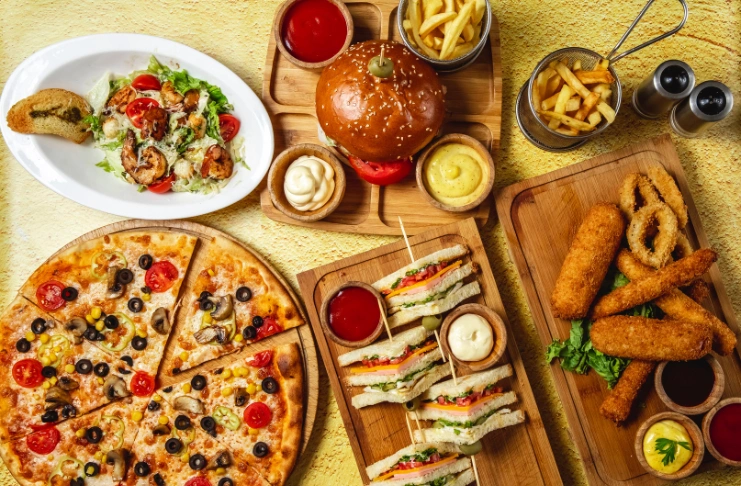
Staying competitive in the fast food industry requires innovation, and today’s top brands are turning to technology and sustainability to future-proof their kitchens. Let’s look at two key trends changing how kitchens operate.
1. Smart Equipment
Smart fryers, ovens, and inventory systems use AI to automate cooking cycles, send alerts for maintenance, and even suggest energy-saving routines. These tools reduce human error, improve consistency, and allow better decision-making using real-time data.
2. Energy Efficiency
Eco-conscious consumers and rising utility costs are pushing restaurants to invest in energy-efficient equipment. Energy Star-certified appliances consume significantly less power and water, while also qualifying for rebates in some jurisdictions. Induction cooktops, low-energy dishwashers, and LED lighting are excellent starting points.
These forward-thinking upgrades not only reduce operational costs but also position your brand as environmentally responsible—something modern consumers increasingly care about.
Cost of Setting Up a Fast Food Kitchen

Setting up a fully functional kitchen requires thoughtful budgeting across multiple equipment categories. Here’s a breakdown of typical investment ranges to help you plan effectively:
- Cooking Equipment (Grills, Fryers, etc.): Expect to spend between $3,000 and $10,000 on essential cooking appliances that form the heart of your kitchen.
- Commercial Refrigeration Units: These are crucial for storing perishable items and usually cost $2,500 to $8,000.
- Refrigerated Prep Tables: Perfect for assembling ingredients quickly and safely, costing around $1,200 to $3,000.
- Holding Cabinets & Heat Lamps: To keep food warm and ready during busy hours, budget about $1,000 to $4,000.
- Beverage Equipment (Soda Dispensers, Coffee Machines): Depending on your drink menu, these can add $1,500 to $6,000 to your setup.
- POS & Kitchen Display Systems (KDS): For streamlined order management, you’ll likely invest $1,500 to $4,500.
- Ventilation Systems: Crucial for safety and compliance, these typically cost $2,000 to $7,000.
- Miscellaneous Tools & Smallwares: Utensils, containers, pans, and other essentials may add another $500 to $2,500.
Maintenance & Cleaning

Commercial kitchens move fast—but skipping cleaning routines can slow you down over time. Equipment maintenance is vital for performance and longevity. Deep fryers should be filtered and wiped daily, grills scrubbed down nightly, and refrigeration systems checked weekly. Monthly deep-clean routines for ventilation hoods, storage units, and coolers help prevent health code issues and expensive repairs.
Best Practices for Equipment Purchasing
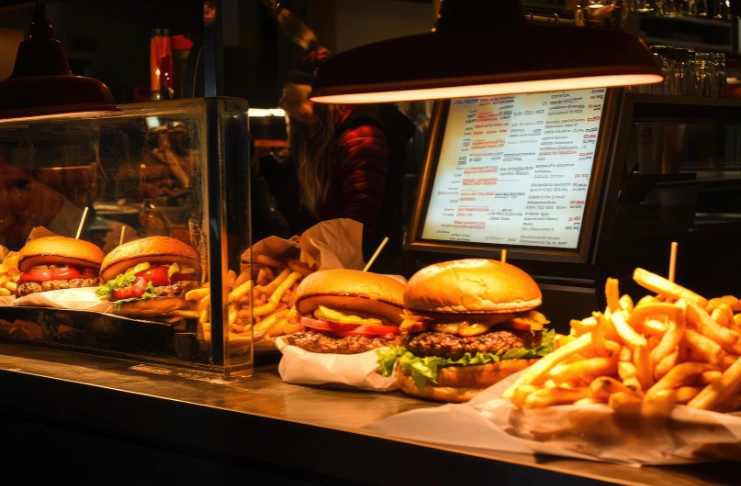
Purchasing kitchen equipment is a major investment, so it’s important to do it right. Start by comparing brands not just on price, but also durability, service networks, and customer reviews. Choose equipment that can grow with your business—going slightly oversized can save you future upgrade costs.
Always review warranty options, request product demos, and consider used equipment for non-core items to reduce costs. High-use items, like fryers and ovens, should be bought new for longevity and reliability.
Conclusion
A thriving fast-food kitchen runs on speed, but it’s built on smart planning. With the right equipment, strategic purchases, and an optimized layout, you’ll create a high-performance environment that handles volume without sacrificing quality.
In the world of quick service, every second counts—so make sure your kitchen is designed to deliver and dominate.
Frequently Asked Questions
1. What do you need to own a fast food restaurant?
You need a business plan, licenses, location, kitchen equipment, staff, and diverse menus to own a fast food restaurant.
2. What is fast food equipment?
Fast food equipment refers to appliances like fryers, grills, refrigerators, prep tables, and point-of-sale systems used for quick-service operations.
3. What is the most profitable item in fast food?
French fries are among the most profitable fast food items due to their low cost and high markup.
4. How much does it cost for restaurant equipment?
Restaurant equipment can cost anywhere from $20,000 to $100,000, depending on the size, concept, and quality of items.
5. What equipment do I need to open a restaurant?
You need refrigerators, grills, ovens, fryers, prep stations, dishwashers, storage racks, and POS systems to open a restaurant.
6. What’s the most successful fast food business?
McDonald’s is the most successful fast food business globally, known for its massive footprint and consistent profitability.
7. How do I start my own fast food restaurant?
To start a fast food restaurant, develop a business plan, secure funding, choose a location, register the business, get licenses, buy equipment, and hire staff.
8. How to setup a fast food restaurant?
Set up a fast food restaurant by designing a functional kitchen layout, streamlining front-end operations, installing equipment, and training staff for quick service.
9. How profitable is owning a fast food restaurant?
Owning a fast food restaurant can be very profitable, with margins ranging from 6% to 20% depending on location, brand, and efficiency.
10. How should a restaurant kitchen be set up?
A restaurant kitchen should be set up in a streamlined, station-based layout to ensure smooth workflow, hygiene, and safety.
11. What do you need to start a fast food restaurant?
You need capital investment, a well-researched menu, licenses, a strategic location, kitchen equipment, and trained staff to start a fast food restaurant.


